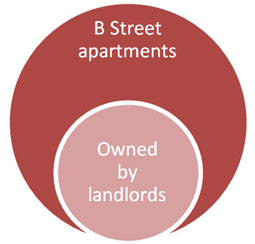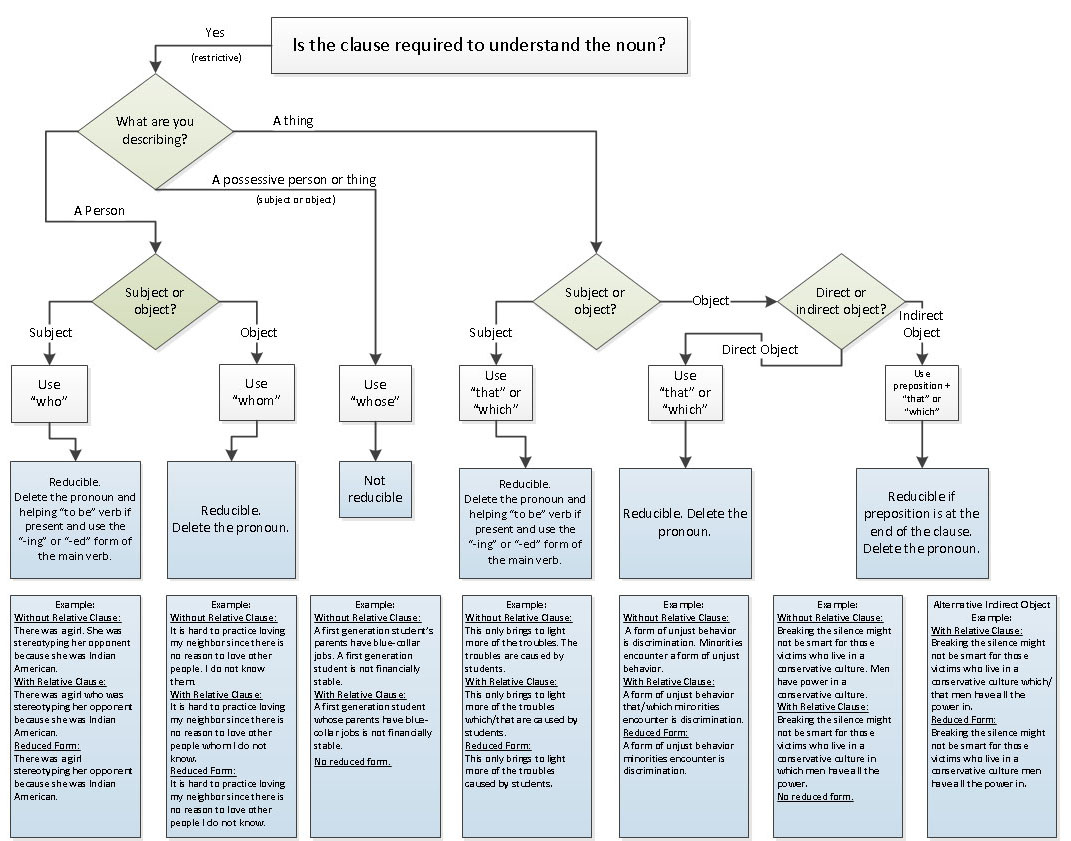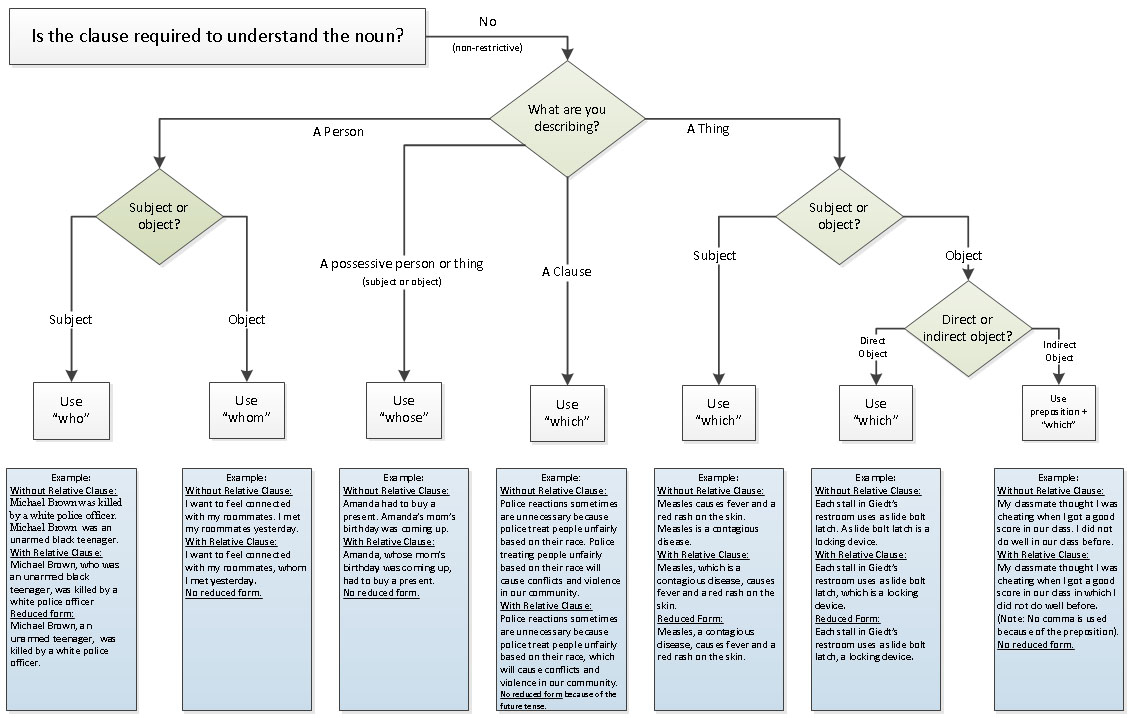Relative Clauses
Click to download a PDF of this lesson.
Sometimes, you may need or want to add additional information to a noun in a sentence for clarity, context, or style. One way to do this is to add an adjective (for example, “red ball”). Functioning similarly to an adjective, a relative clause (also known as an adjective clause) is a type of dependent clause that describes a noun. However, unlike an adjective, a relative clause follows the noun it’s describing and, like other clauses, always contains a subject and a verb. Grammar and style guides sometimes disagree on how to form relative clauses. This chapter presents rules to form relative clauses that sound grammatical to native English speakers. Most importantly, relative clauses are useful to combine simple sentences into a complex sentence. For example:
- Amanda is a senior nun.
- Amanda works at an old Christian church.
- Amanda, who works at an old Christian church, is a senior nun.
The “Amanda” in the second sentence was replaced with the pronoun who in the third sentence, and the newly formed relative clause “who works at an old Christian church” was embedded into the first sentence to create a new, complex sentence. When forming sentences with relative clauses, which pronoun to use partly depends on if the pronoun functions as the subject or object in the relative clause. It also depends on whether the noun is alive; who and that can refer to people and animals, that can also refer to things, and which can only refer to things. In sentence 3 above, the word “Amanda” becomes the subject relative pronoun “who” when it gets embedded as a relative clause. See the flowcharts at the end of the chapter for more examples.





